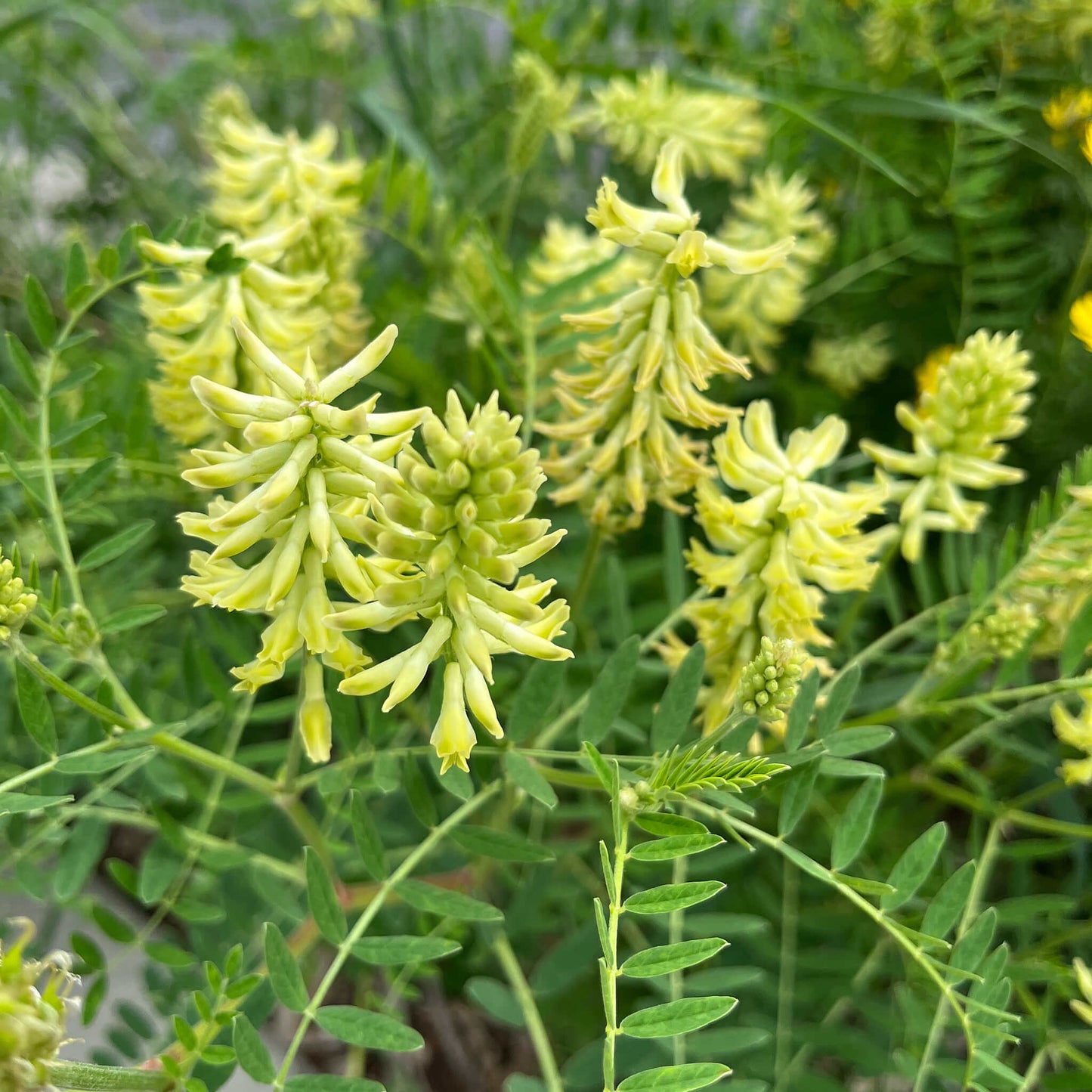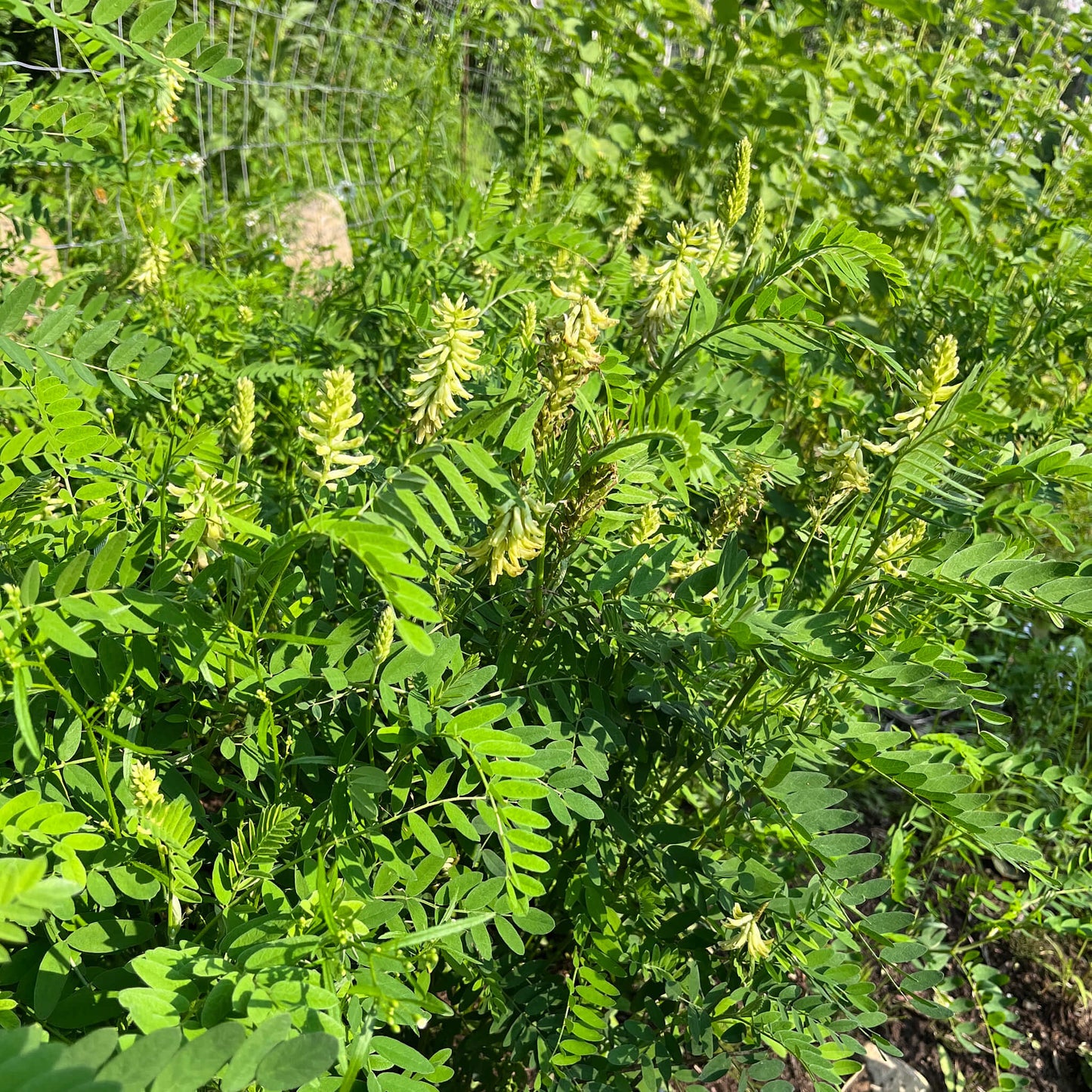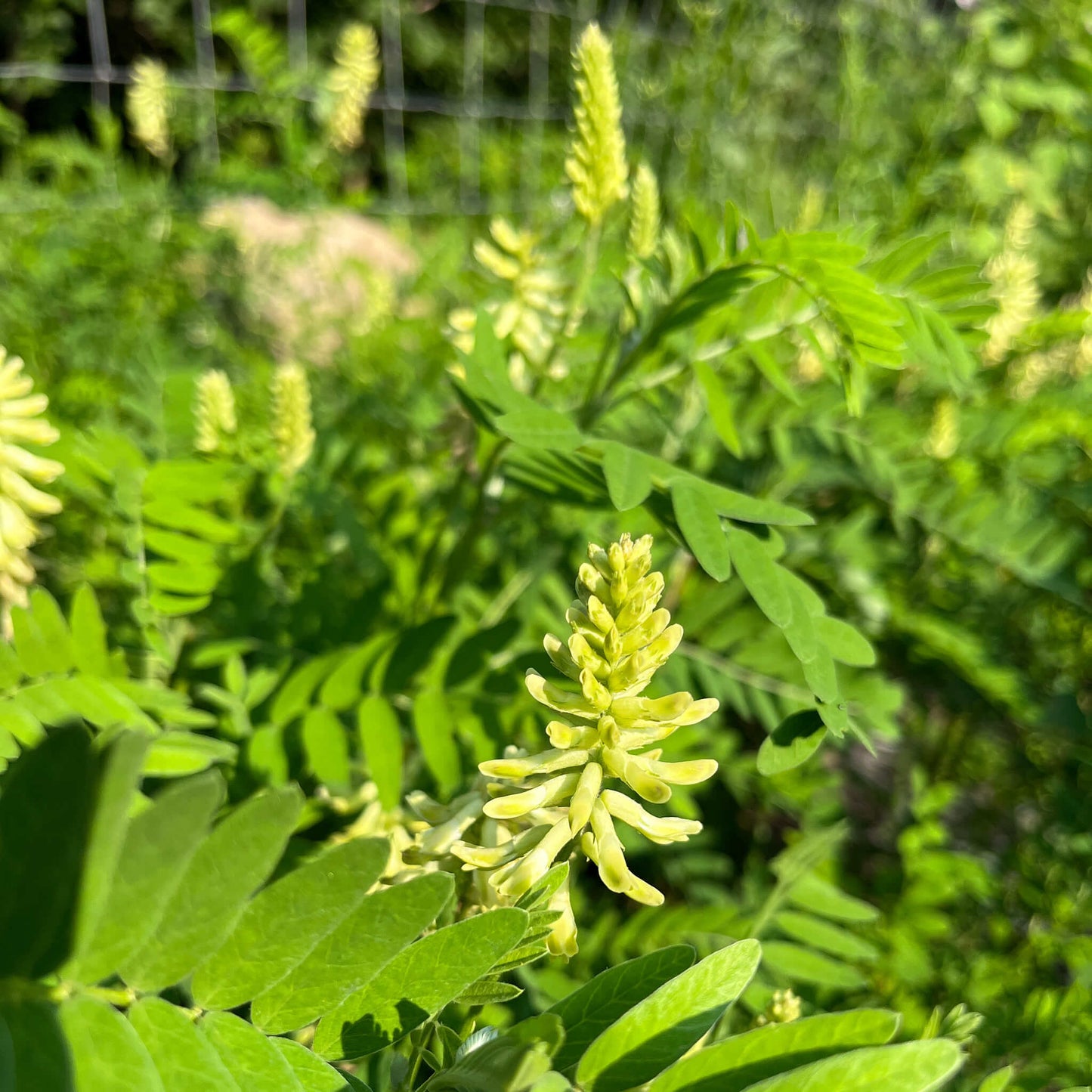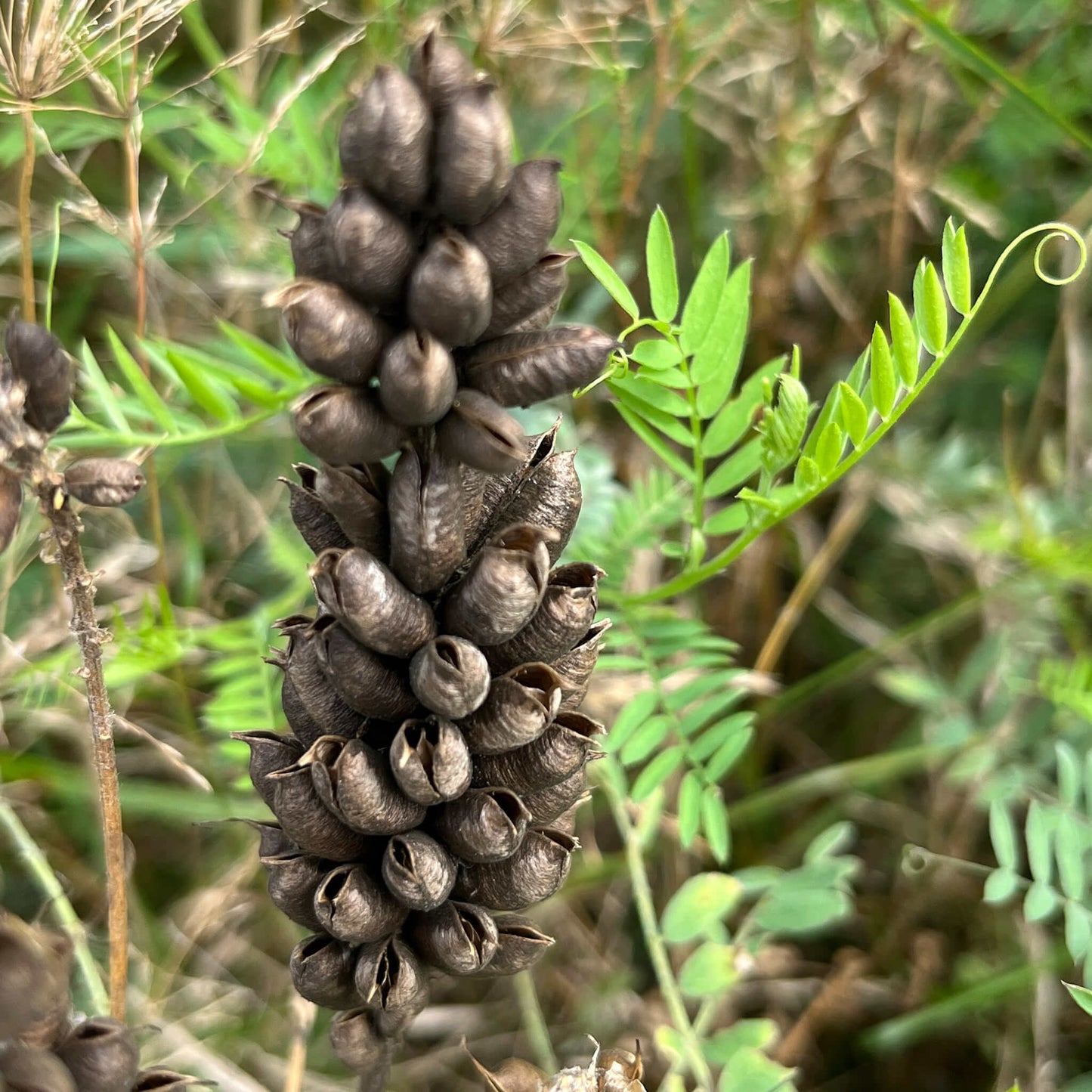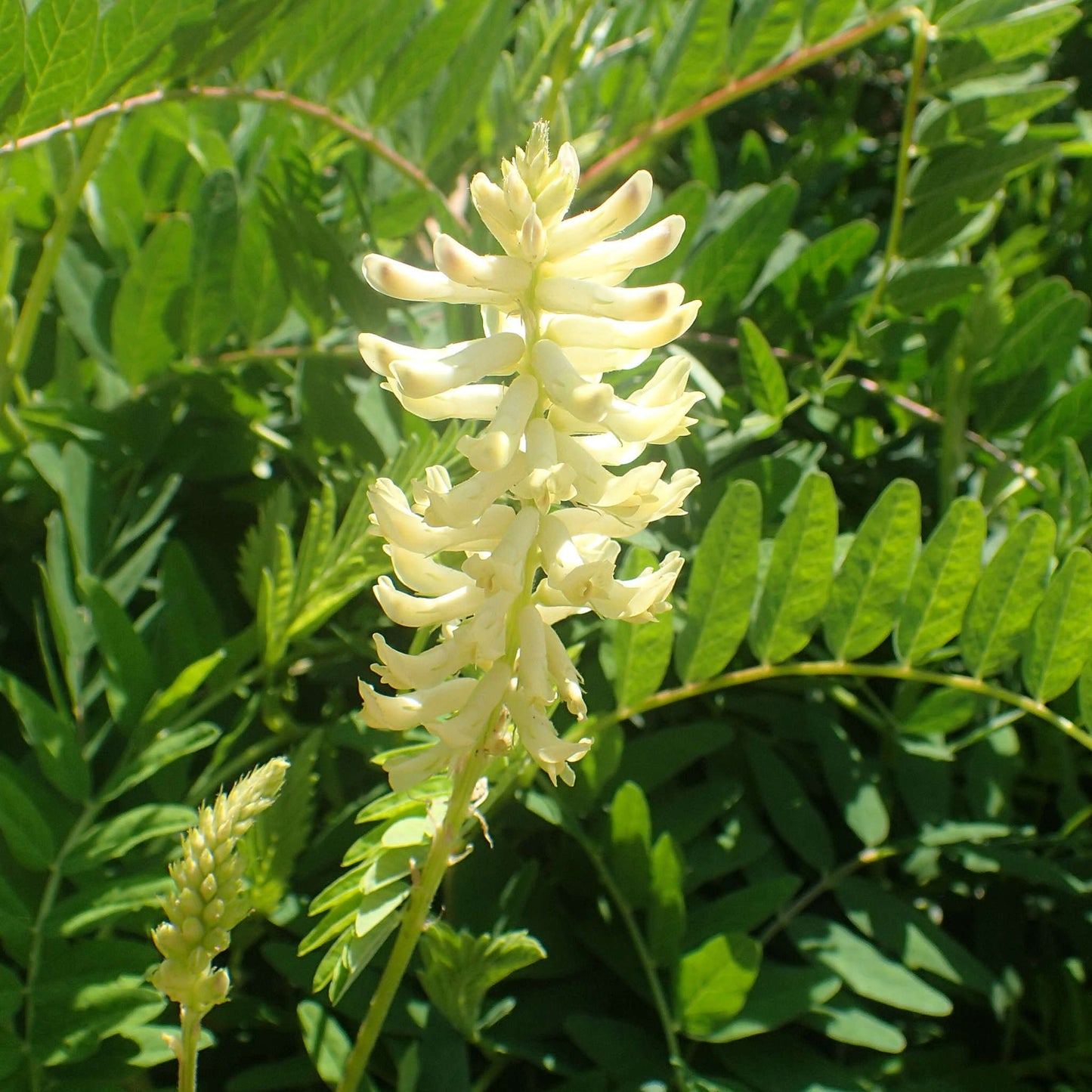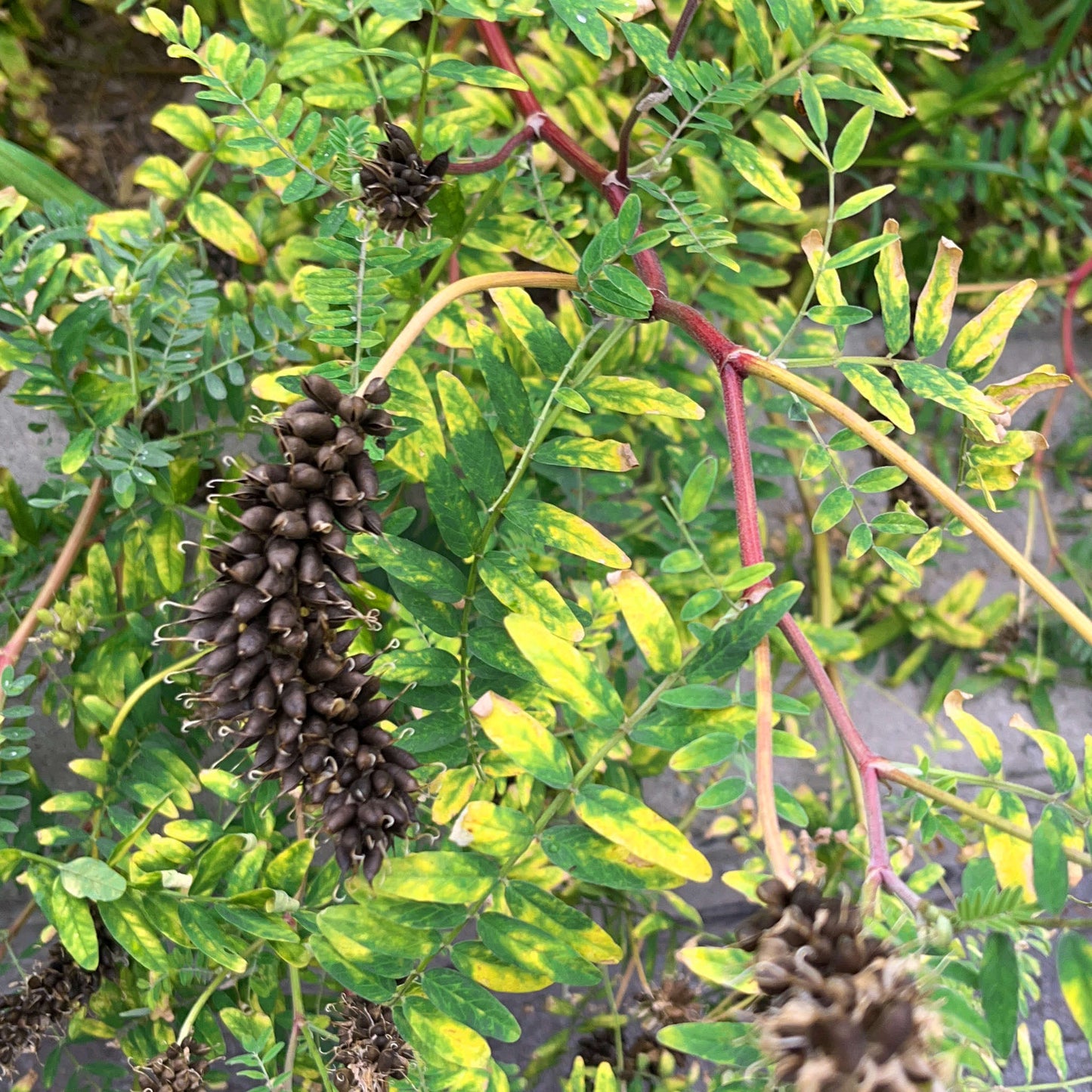For successful seedlings,
see the growing notes at the bottom of the page!
Canada milk vetch (Astragalus canadensis) is a native perennial plant, reaching heights up to 90 cm. It is distinguished by its lovely cream-coloured flowers, rich in nectar, which attract numerous pollinators. This nitrogen-fixing plant, belonging to the legume family (Fabaceae), plays a vital role in improving soil fertility. Starting in August, its flowers develop into pods containing seeds that remain on the plant throughout the fall and even into early winter, providing an important food source for birds.
Medicinal and Culinary Uses
The root is analgesic and anti-hemorrhagic. It is also edible and can be harvested in the spring or fall. Some caution is advised, as if the root is bitter, it may indicate the presence of toxic alkaloids.
Ecological Role
This plant contributes to biodiversity by attracting various pollinators while enriching the soil through its nitrogen-fixing ability. By incorporating milk vetch into gardens, we promote a healthier and more sustainable ecosystem while providing a suitable habitat for birds.
Canada milk vetch seeds require cold stratification to ensure germination. See the cultivation notes below for more details.
Akène cannot assume any responsibility for the use of plants for therapeutic purposes. Always seek advice from a professional before using a medicinal or edible plant.
Sowing and Growing
Technical Details
Seeds per packet: 75
Family: Fabaceae
Scientific name: Astragalus canadensis
Life cycle: Perennial
Hardiness zone: 2
Soil type: Sandy to loamy
Soil moisture level: Medium
Soil - additional attributes: Well-drained
Light: Sun, part shade
Blooming: June to July
Spacing: 60 cm
Height: 90 cm
Deer resistance: Low
Stratification: 30 days
Scarification: Sanding
Germination time: 15 to 20 days
Sowing depth: 5 mm


